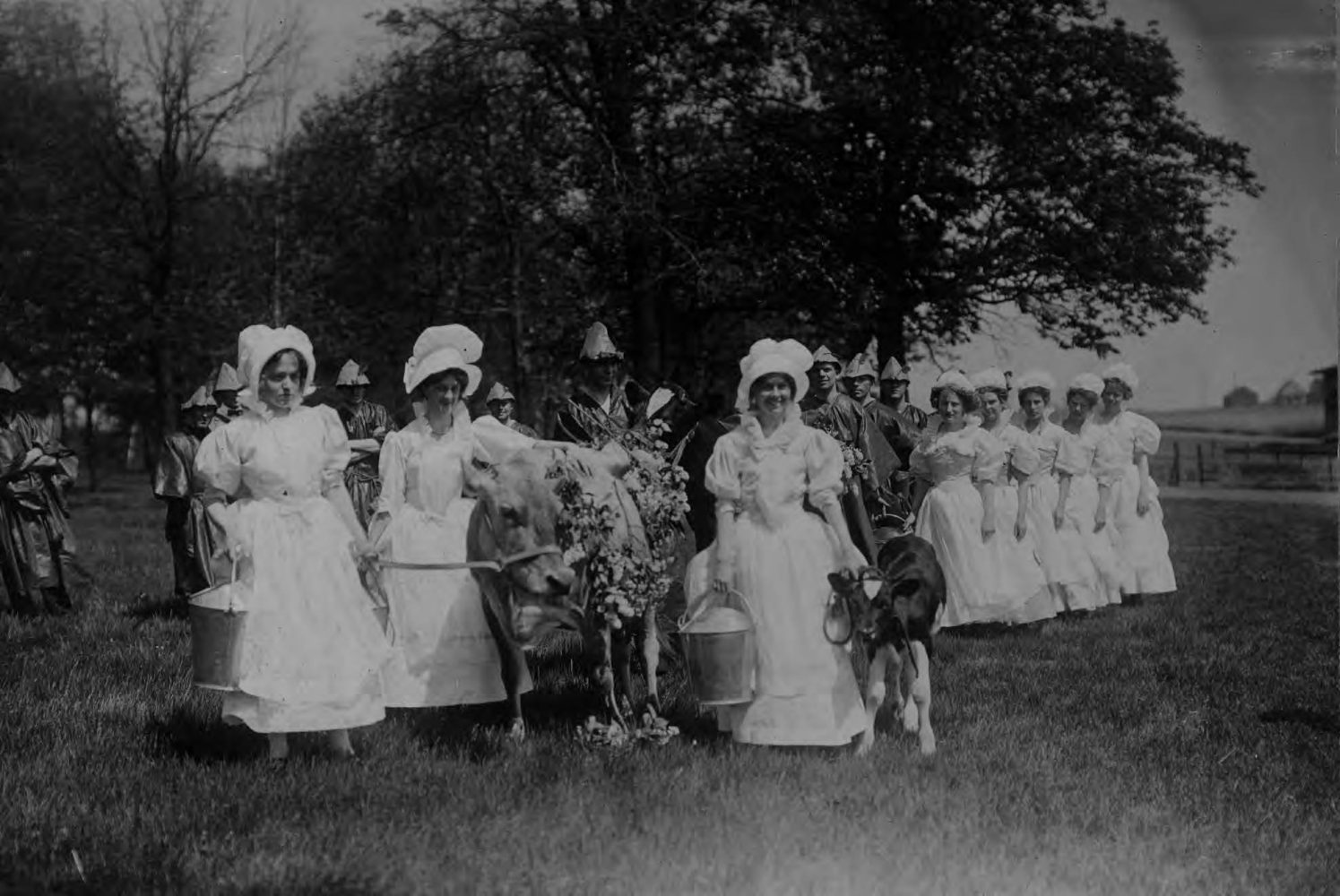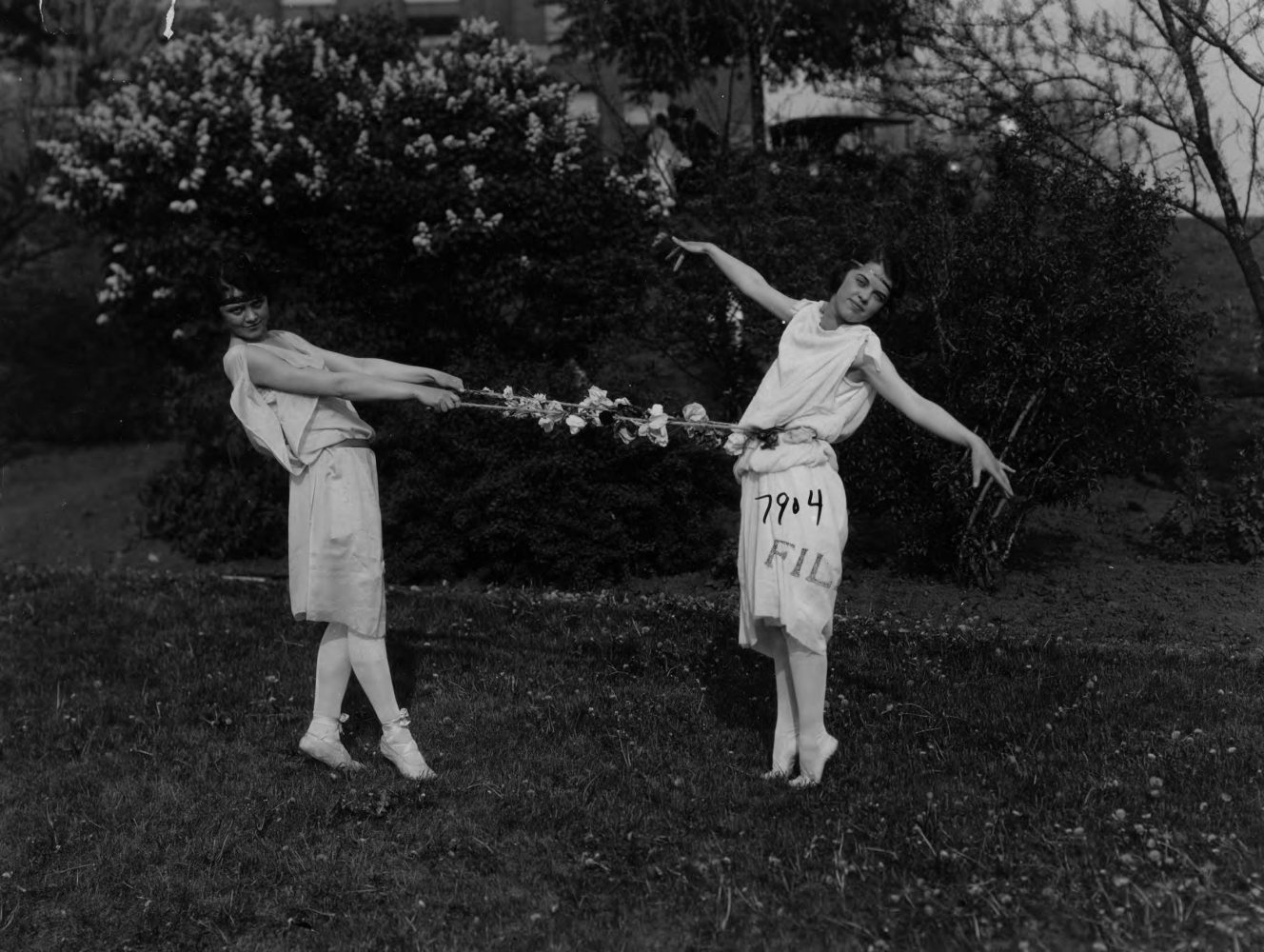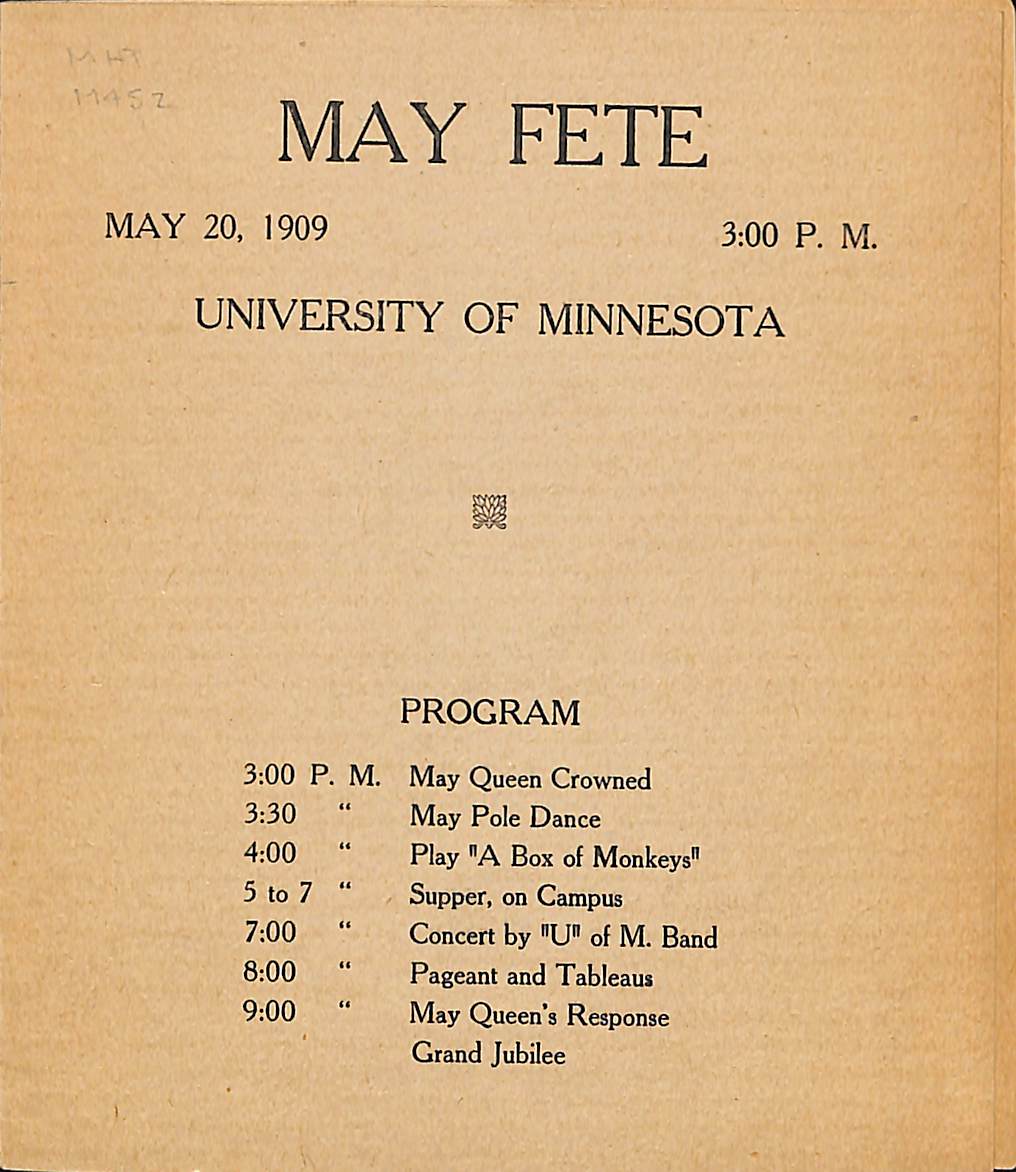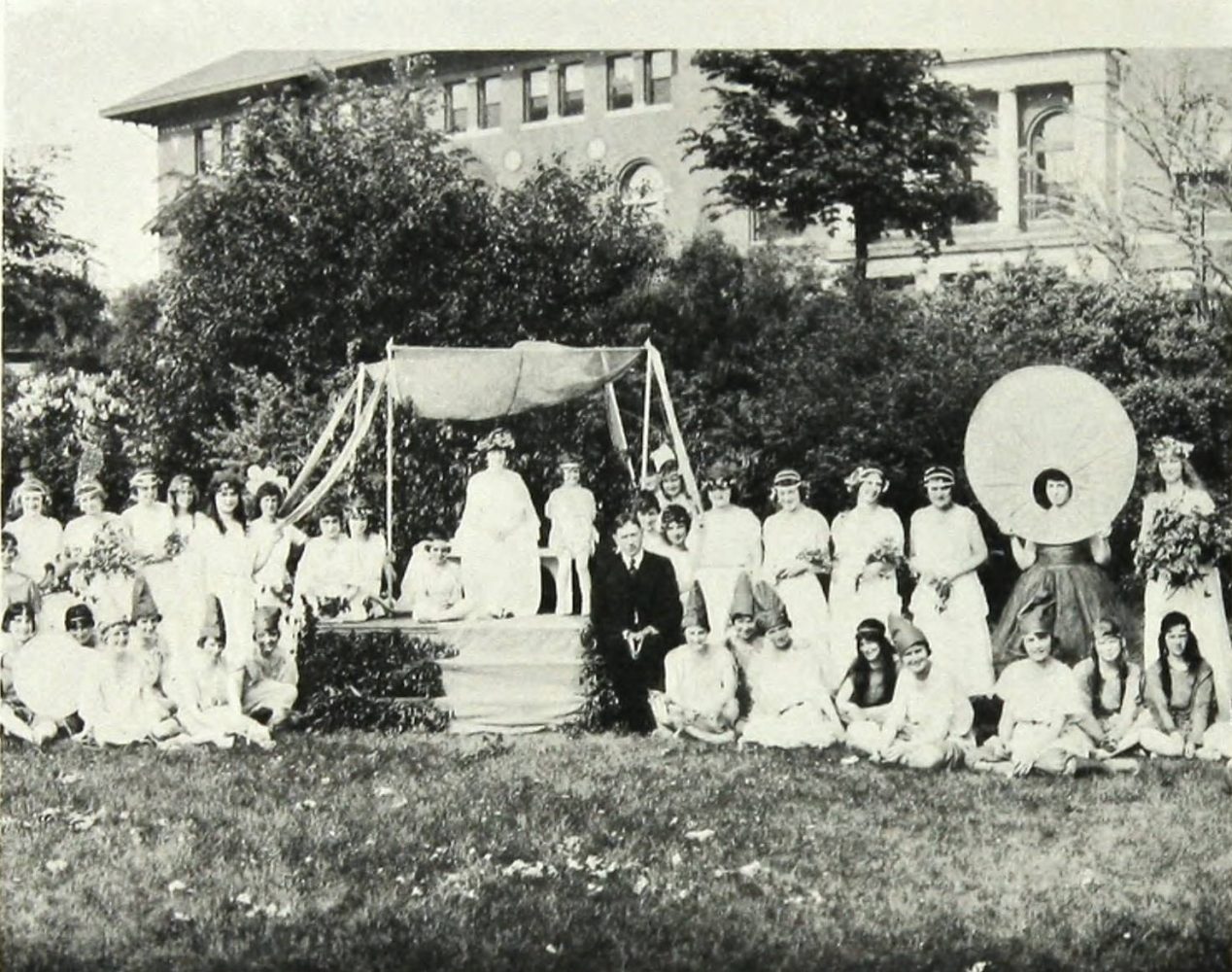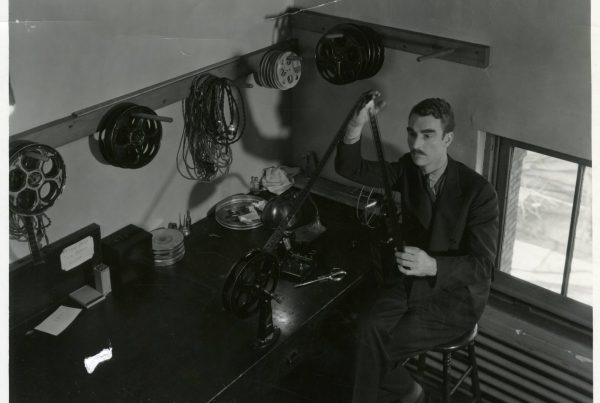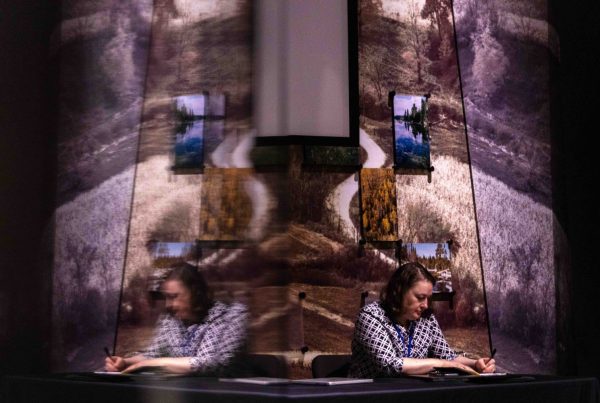As early as 1904, May Fete took place on the University of Minnesota campus as a new attraction for students and faculty (1). Also known as the “Big May Carnival,” the campus was “transformed into a wonderful garden with paper flowers, lights, seats, and booths in every direction (1). Each sorority was in attendance, along with the band and glee club who performed for attendees.
It was not until 1909 when members of the Young Women’s Christian Association (YWCA) strove to make the event “a permanent feature” every year (2). That year’s festivities featured groups in costumes, decorated booths featuring various foods (3) and the crowning of the May Queen and a May pole dance (4). There was even a “telegraph office where anxious lovers [could] send messages to their affinities and receive answers” and a booth where fortunes were told by gypsies (4).
The program of that year included the following timeline (5):
3:00 pm – Crowning of the Queen of the May
3:30 pm – May Pole Dance by sixteen lads and lasses
4:00 pm – “A Box of Monkeys,” play, in Chapel
5 to 7 pm – Refreshments served from booths on campus
7 pm – Concert by University of Minnesota Band
8 pm – Pageant
9 pm – May Queen’s Response
This event continued for the following two years and by 1919, May Fete was being held by the Agriculture College on the St. Paul Campus (6). It was the hope by President Burton, that the event would “bring the two campuses closer together” (7). The Agricultural College continued to host the May Fete for the following two years, which included a basket supper and an All-University dance in the Farm Gymnasium (8).
By the mid-1920s and into the 1930s, the May Fete was no longer a popular endeavor by students on campus. But, it can be remembered for its spring-like nature and an ethereal way to end the school year.
References:
(1) Minnesota Daily, May 13, 1904
(2) Minnesota Daily, April 27, 1909
(3) The Minnesota Daily, May 11, 1909
(4) The Minnesota Daily, May 19, 1909
(5) The Minnesota Daily, May 20, 1909
(6) The Daily Bulletin: May 23, 1919


